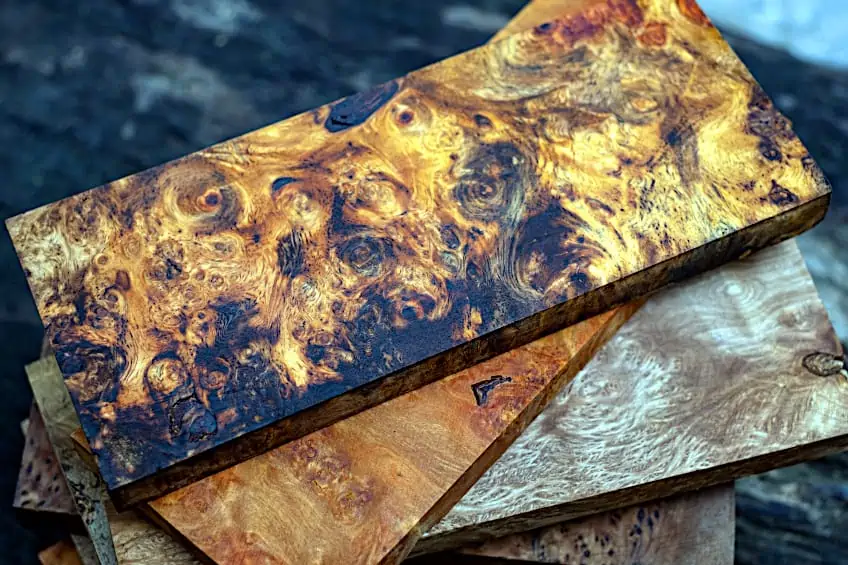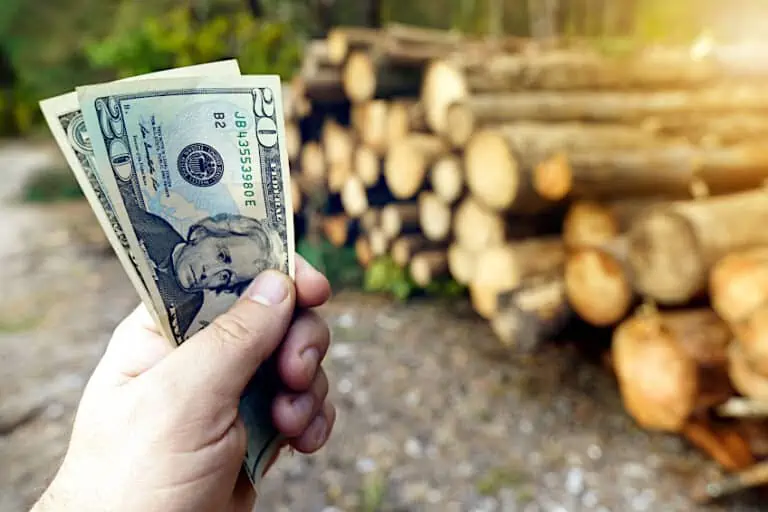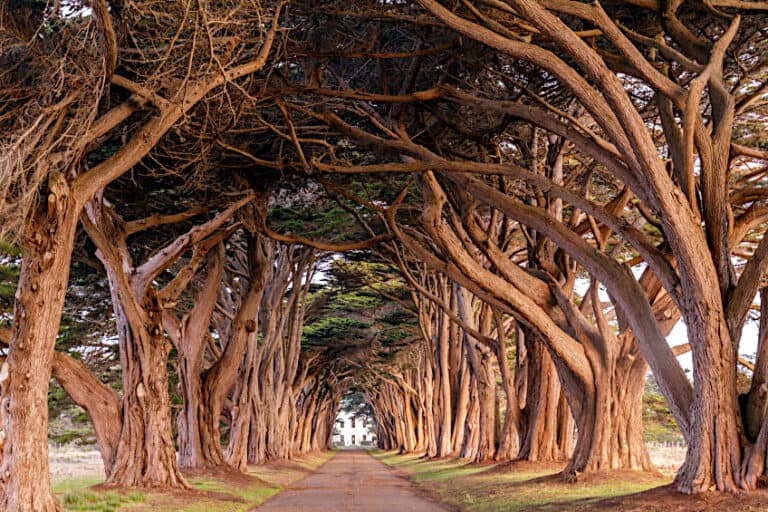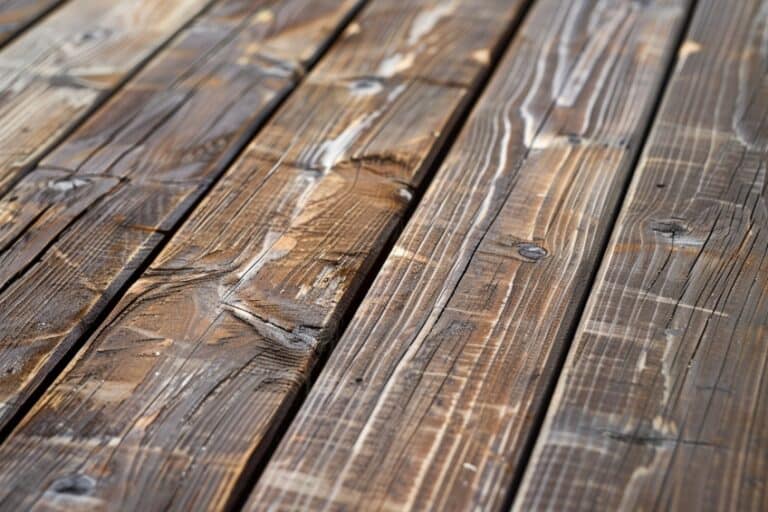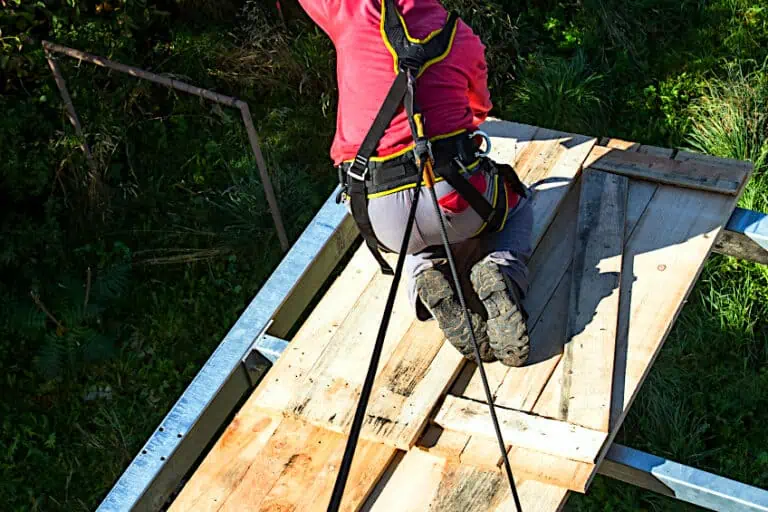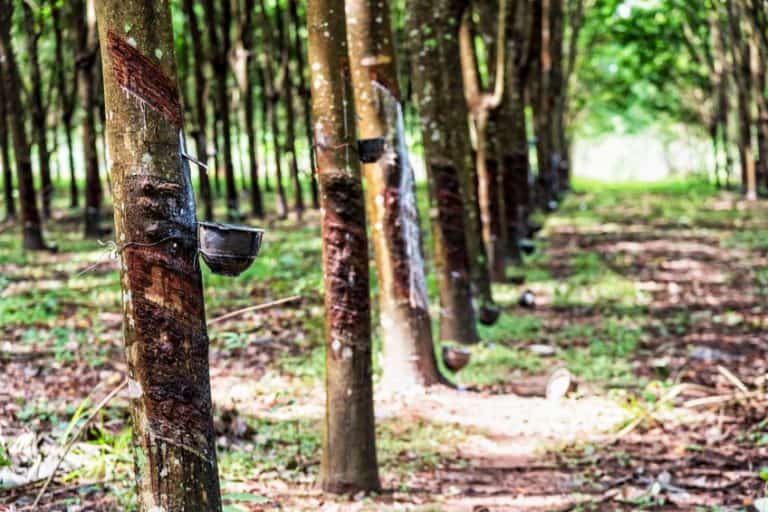What Is Burl Wood? – Types of Burled Wood and Their Uses
Wood has been a fundamental part of human evolution even before we discovered how to set it on fire, and it has continued to house, feed and clothe us to varying degrees to this day. Different types of wood are used for different applications, and we’ve even created new kinds of wood by processing and combining different wood species in the form of veneer, particleboard, and medium-density fiberboard (MDF). One of the most popular but seldom talked about wood types is burl wood, it is one of the most sought-after wood types on the face of the planet, but unless you’re an avid crafter or woodwork enthusiast, the general public typically doesn’t know much about it. This being said, let’s have a look at what burl wood is, where it is found, how it is made, what it’s used for, and what makes this wood so special.
Table of Contents
What Is Burl Wood?
What is burl wood? It’s a bit strange, but essentially, burled wood is a particular grain of wood that can be found on a number of different tree species. This means that burl wood isn’t a different species of wood entirely, but rather an offshoot of existing tree species that have developed over time. Confusing? We think so too. To make it a shade simpler, burled woods are little (or big) knotty growths that form at the base of tree stumps as a result of bud tissue that has failed to sprout.
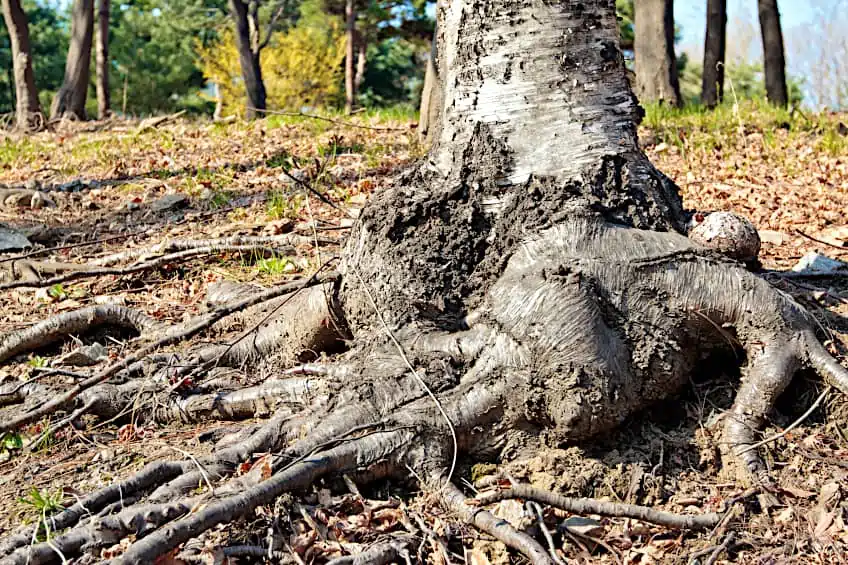
Why does this happen? Well, pretty much for the same reason that we as human beings tend to develop bumps or growths that are considered to be irregular. Burl wood can form as a result of things like damage, stress to the tree, fungal infection, viral outbreak, insect infestation, or simply a genetic disorder in a tree or family of trees. This condition causes the wood to grow irregularly and creates some pretty cool grain patterns on the interior of the wood.
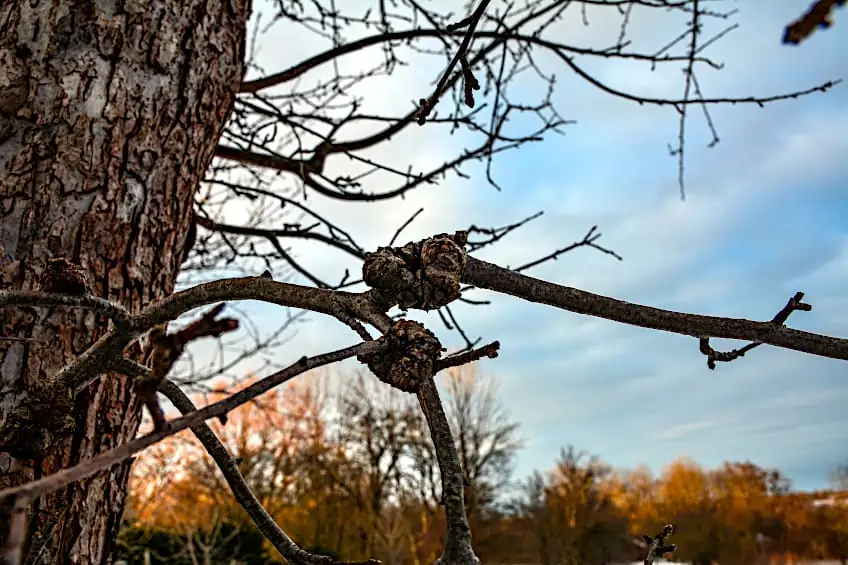
Why do trees grow burl wood instead of new branches or roots though? Well, it’s sort of a defense mechanism. When a tree is pruned or encounters foul weather it will do its best to compensate for the loss of an appendage either by re-growing it or by sealing off that section with callus tissue in the form of burl wood. Burled wood is extremely durable and doubles as a defense against critters looking to make the tree their home.
So, they’re found where a tree has been hurt or if there is any change in the tree’s natural growth cycle. Does this mean that wood burl is only found on the surface of the tree? Nope. Wood burl can be found on the surface of a tree’s trunk, close to the soil at the root of a tree, or underground connected to the tree’s larger root system. Wondering which types of trees grow burl? Here are a few of the common tree species that tend to develop burl wood:
- Cherry trees
- Elm trees
- Oak trees
- Walnut trees
- Maple trees
- Ash trees
What Is the History of Burl Wood?
Like most superheroes, burl wood has its very own origin story, and much like most superhero origin stories, it starts with a tragedy. In the 1900s close to the end of the second industrial revolution, big lumber suppliers needed redwood for furniture making, but they only needed the straight-grained wood from the trunk of the tree which meant that large chunks of burl wood were simply thrown onto the garbage heap.
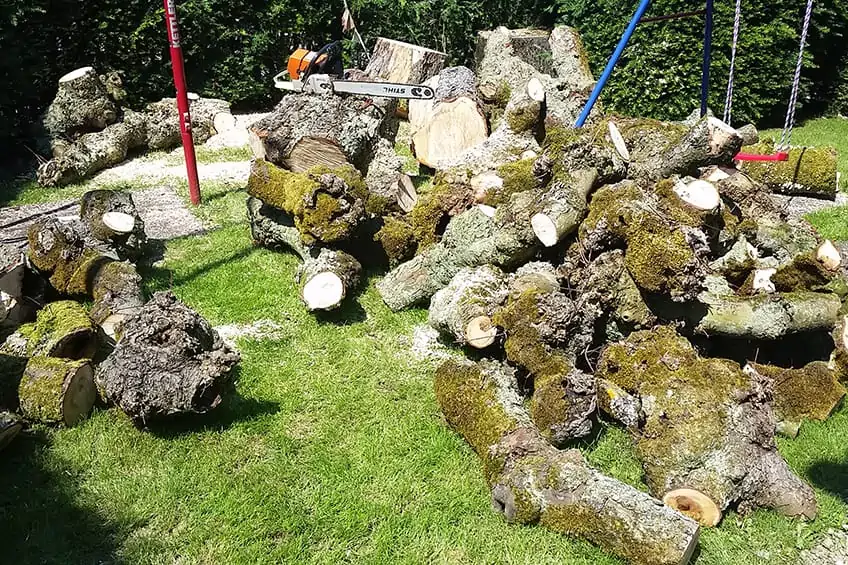
Fortunately, woodwork enthusiasts and artisans soon saw that the unique nature of this wood could be used to make some really interesting workpieces. As you can imagine, their workpieces grew in popularity and soon everyone wanted their own one-off burl wood workpieces, which turned out to be pretty popular in the 1970s all the way into the 1980s.
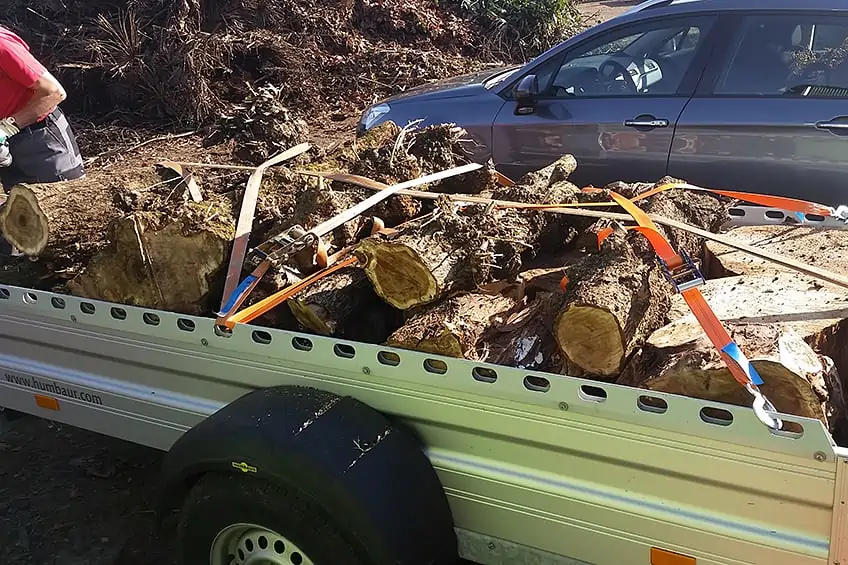
Unfortunately, it’s at this stage that all of the poaching started. Enthusiastic (and considerably brave) poachers made their way onto federally protected lands and made off with quite a bit of burl wood, which left loads of trees in dire straits. Thankfully, these days there are more stringent protocols in place to protect trees that produce wood burl and the land they’re grown on.
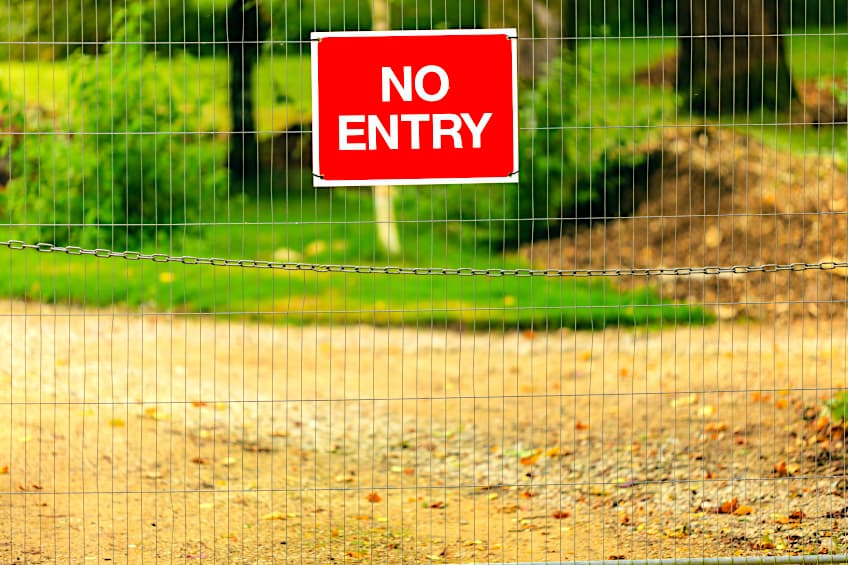
How Do Burls Grow?
Burls are generally seen as growths on trees, but they are a little more intricate than that. In fact, there are a few types of burled wood that you could encounter if you’re out and about looking at some trees (people do different things in their spare time). The most common burled wood you’ll see out in the wild is live burl, which typically grows on the trunk or branches of trees, these a pretty small compared to some of the others.
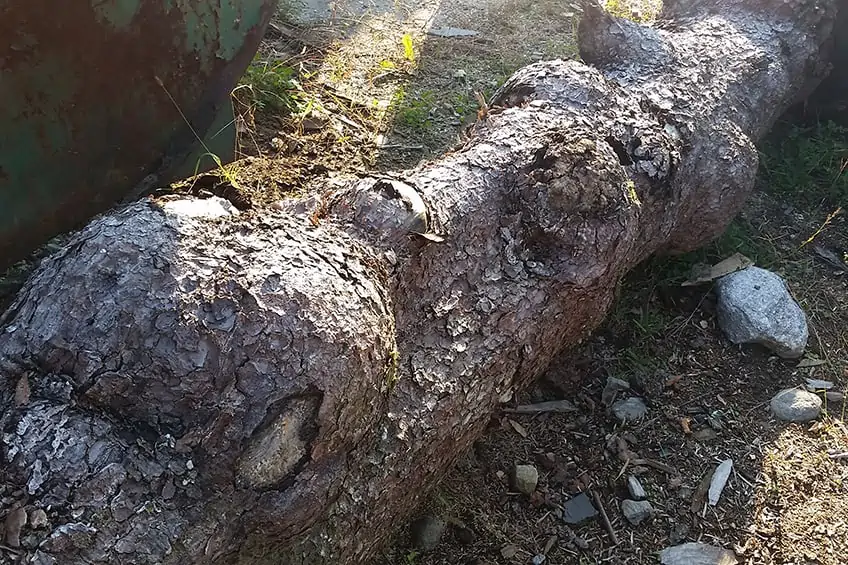
Another kind of burl that you might come across is known as a crown burl. Unlike live burls which tend to grow on the trunks and branches of a tree, these tend to gown near the roots and stump. They are bigger than live burls and often continue into the root system of the trees they’re found on, which can make them a bit challenging to harvest compared to live burls.
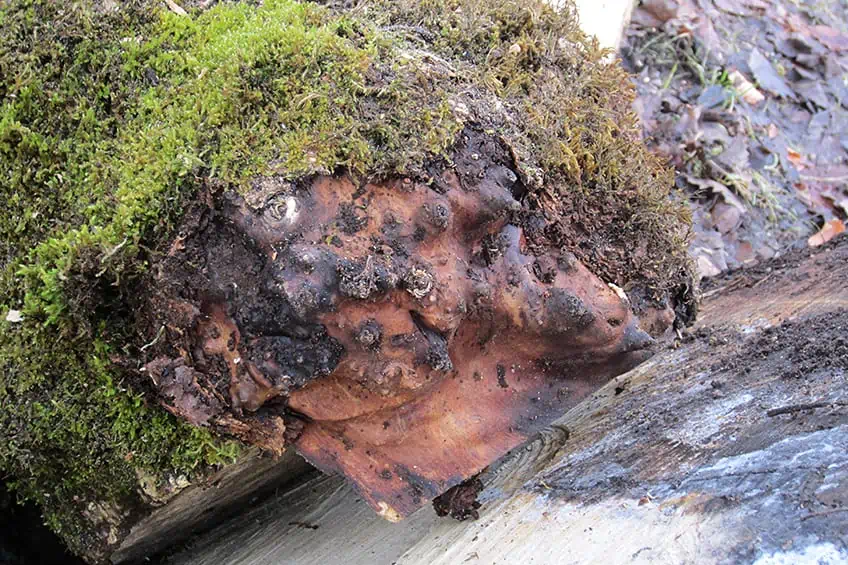
It’s pretty rare to find crown burls these days. Replacing them with relatively the same size and grain patterns are stump burls. While stump burls don’t extend to the root system of the tree, they can still be found at the base of a burl tree just as crown burls used to. These burl types have different grain patterns and densities depending on the type of stress the tree has been subjected to.
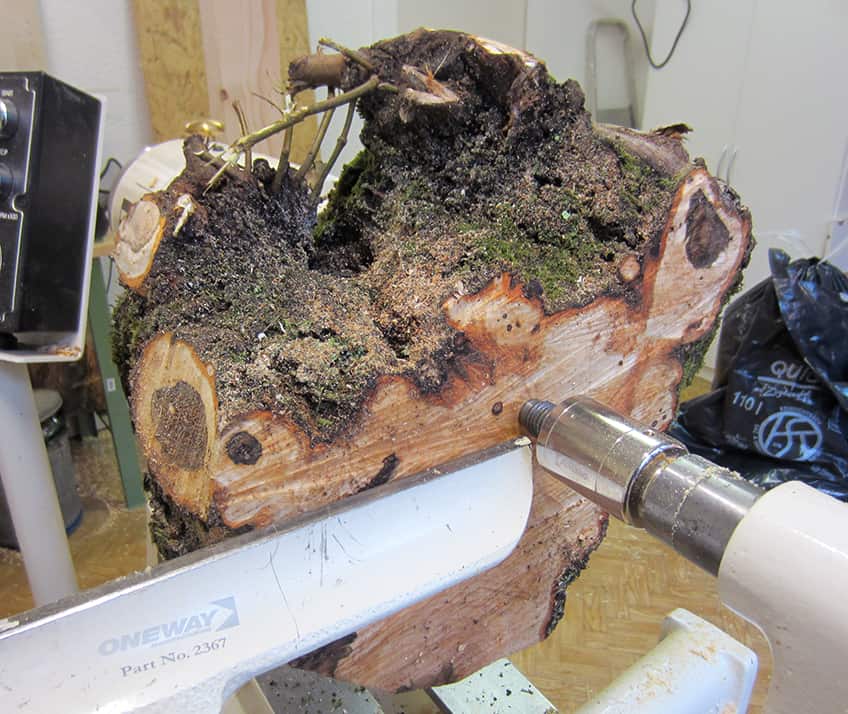
How do these wood burls actually grow though? Thinks of wood burls as a supplementary survival mechanism for a tree. It’s a contingency in case of damage to ensure that the tree will be able to pass on its genetic code. How does it do this? Well, wood burs are developed from sapling tissue which forms if the tree encounters damage or perceived hostility from the weather or its immediate environment.
This way if the tree falls over or loses an appendage it will have the opportunity to grow again. Pretty cool right? Think of it as you being able to grow an entirely new version of yourself simply by planting a small part of yourself into some nearby soil. These saplings don’t stay sapling though, and eventually, they develop into grained wood like the rest of the tree, which is what we perceive as wood burl.
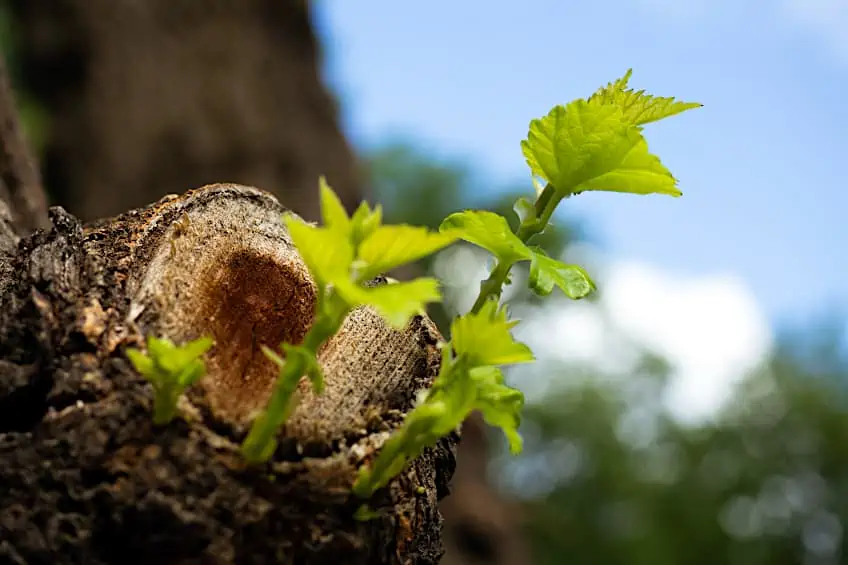
What’s Inside Wood Burls?
Ever wondered what’s inside those burls on trees? We’re going to guess yes, after all, they’re pretty interesting and kind of weird to look at when compared to the rest of the tree. As we mentioned previously wood burls are made of little saplings that haven’t sprouted, so they integrate themselves back into the sapwood of the tree and form their own bark.
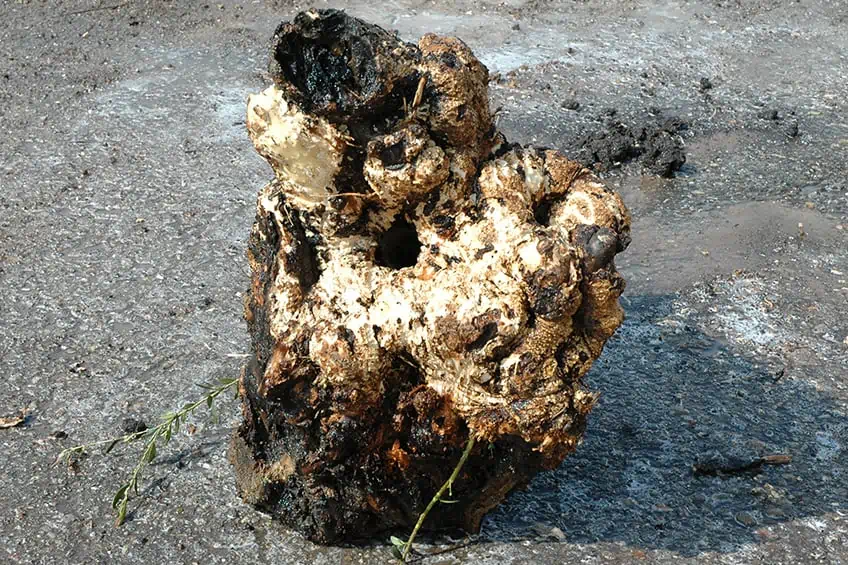
On the inside of tree burl then is an entirely unique type of wood with varying grain patterns, densities, colors, shapes, and sizes. The insides of these wood burls often present swirling patterns as they have not grown in tandem with the rest of the tree’s wood to ensure things like growth or structural integrity.
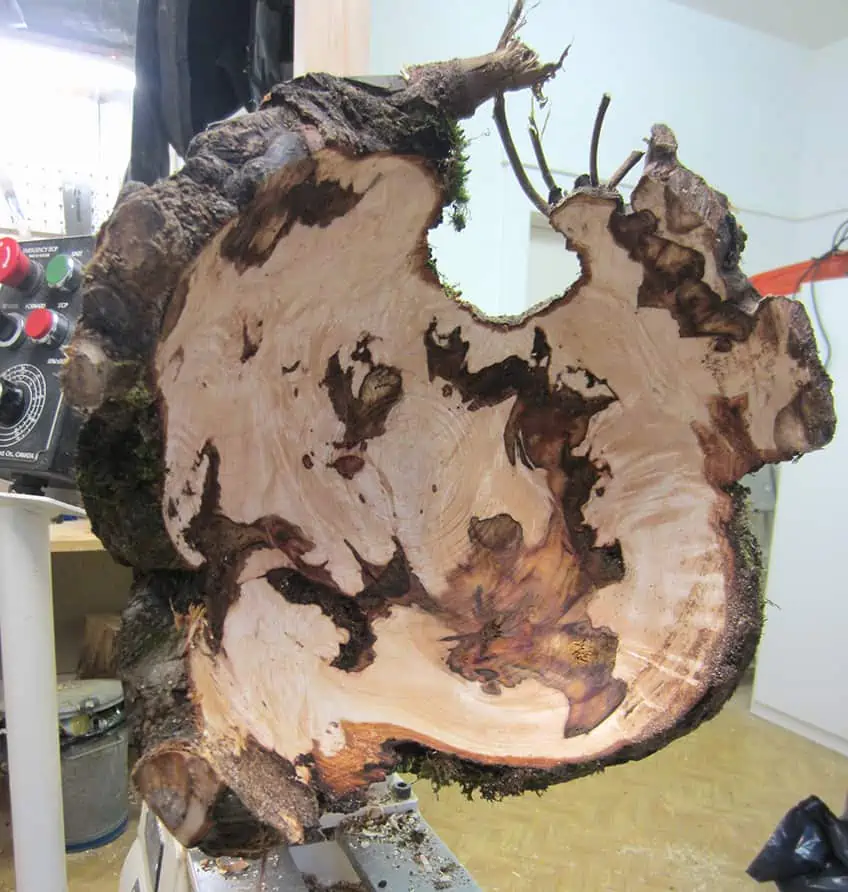
Because of this, no two burls will ever be the same, or even remotely similar for the matter. Each wood burl is completely unique, which is what makes them so appealing for woodwork enthusiasts and carpenters alike. Some wood burls even contain soil, sediment, minerals, air pockets, or foreign objects that may have become trapped during the growth process.
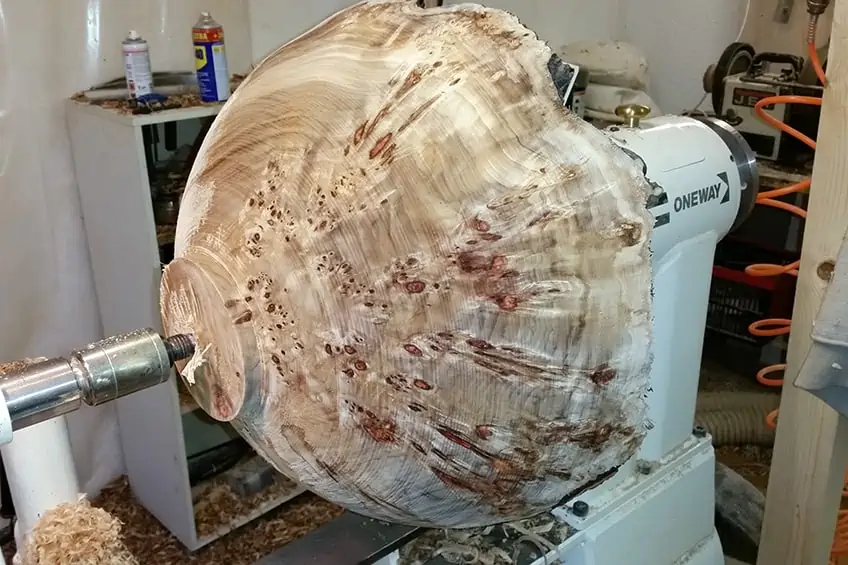
You never really know what you’re going to encounter when you’re cutting open wood burl. This random grain configuration makes hunting for wood burl kind of like treasure hunting, except every wood burl is its own unique type of treasure. This also makes wood burl sought after, which means you could find yourself paying a pretty penny for furnishings fashioned from burl wood.

What Are the Different Types of Wood Burl?
As we mentioned previously there are different types of wood burl found on various tree species. Because these tree species have unique heartwood and sapwood, the burl wood found on them can have considerably different qualities, grain patterns, wood colors, density, durability, and applications. This being said, let’s have a look at some of the different tree species that burl can be found on and the characteristics of the burl they produce.
| Tree Species | Does It Produce Burl? |
| Maple Tree | ✔ |
| Pine Tree | ✘ |
| Sweet Gum Tree | ✘ |
| Fir Tree | ✘ |
| Cherry Tree | ✔ |
| Aspen Tree | ✘ |
| Oak Tree | ✔ |
| Redwood Tree | ✔ |
| Walnut Tree | ✔ |
| Birch Tree | ✔ |
| Ash Tree | ✔ |
Cherry Burl Wood
As the name suggests, cherry burl is the burl derived from the cherry tree. This wood is commonly used in the creation of high-end furnishings which can fetch quite a bit of money in the commercial and private markets. Cherry burl is best known for its durability and ease of use, which makes it a crowd favorite among woodwork enthusiasts both in the USA and the rest of the world.
Considering its characteristics, it comes as no surprise that cherry wood is often placed in the same class of wood as mahogany. Black cherry wood is pretty widespread and easy to find, so this type of cherry burl is the most commonly used, especially in North America. Cherry burl has a beautiful finish, and if you’d really like to set your workpiece apart from the crowd loads of crafters recommend a good varnish or wood stain to really bring out those light muted tones.
Oak Wood Burl
Burled oak is one of the most commonly used burled wood on the face of the planet, and considering how strong and versatile it is this is no surprise at all. As the name suggests oak wood burl is derived from the oak tree, of which there is plenty. Burled Oak has many of the same characteristics as oak wood, but since these burls are among the smallest one can find of all the burl species, it is often some of the most expensive.
What makes this one of the most sought-after burls types out there isn’t just its durability, Burled oak has one of the most impressive natural color schemes of all the burl types. Thanks to the nutrient-rich samplings that form it, burled oak has a rich golden-brown or yellow color that has become something of a trademark. This rich color makes furnishings made from burled oak instantly recognizable.
Redwood Burl
Redwood trees are some of the oldest tree species on the face of the planet. They’re the iconic symbols of coastal America and also happen to produce some of the finest wood burls out there. Something completely unique about redwood burl is that it can grow all the way up in the canopy of the trees, which can make them pretty challenging to harvest at times.
Unlike oak wood burls, redwood burls don’t carry the color of the tree’s heartwood, instead carrying the deep or pale red color of the tree’s sapwood. These wood burls are used to make furniture, but they can also be used to create trinkets like ornate bows, veneer surfaces, and even interior trimmings for homes. Redwood burl is extremely durable and dense, which makes it quite heavy.
Walnut Wood Burl
If you’re looking for a burl that really sets you apart from the crown and just screams exclusivity in every way, burled walnut might be just what you’re looking for. As the name suggests the wood burl is found on the walnut tree and is one of the most expensive wood burls on the market today. Burled walnut is so sought after that it is one of the exclusive interior trim options offered by luxury car manufacturer Rolls Royce.
It’s pretty safe to say that this isn’t the type of wood burl you’ll be looking at if you’re working on a tight budget, but if you are by the means to acquire some of this exquisite wood burl you won’t be disappointed. Burled walnut presents a rich brown color that can be improved with wood treatments and polishing, but to preserve its natural aesthetic this wood burl is simply sealed after shaping.
Birch Wood Burl
If you’re interested in some birch wood burl, you might end up forking out quite a bit of money. By now you’ve probably pieced together that burl wood is more expensive than regular lumber, but because Birchwood grows nearly exclusively in the Alaskan wilderness you’ll find things like import and transport costs attached when purchasing this wood burl.
Birch wood burl is also pretty rare. In fact, when it forms the value of the wood automatically increases. How expensive is Birch burl? Well, it can cost you anywhere up to $1300,00 for a relatively small amount. What is Birch burl used for? It is primarily used in the manufacturing of high-end furnishings and ornate objects like bowls and figurines. Birch burl has a unique brown to light brown coloration that is hard to misidentify.
Maple Wood Burl
Maple is arguably the most interesting type of burl wood out there. While pretty much any tree can grow burl under the right circumstances, none of them are capable of producing the sheer variety of wood burl iterations that maple can. As the name suggests, burled maple is derived from the maple tree, and is fairly common all-over North America, although this doesn’t make it any less expensive.
Burled maple is noticeably larger than many found on other tree species. What’s more is that depending on the tree, burled maple wood doesn’t just differ in its grain pattern, but in its color too. Burled maple can be found in red, off tan, cream, orange, and even brown! If you’re looking for a reasonably priced burled wood, we think that burled maple is a good option.
What Is Burl Wood Used For?
All over the world, there are various tree species, each of which is used for particular applications according to their individual characteristics. Just like the tree species they’re derived from, different species of wood hurl are used for different things according to their respective strengths, weaknesses, and aesthetic appeal. Knowing this, let’s have a look at a few cool things you can make from wood burl.
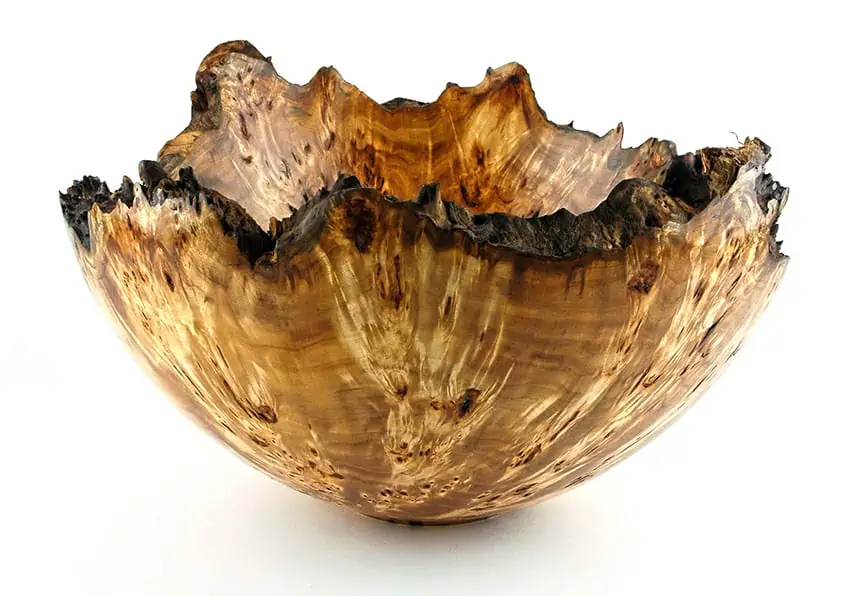
Burl Jewelry
If you’re into jewelry and want to make something entirely unique, you might find that you’ll be able to make entirely one-off jewelry designs using wood burl. You can make anything from necklaces to rings, to bracelets, and even little wooden tiaras can be fashioned from wood burl. This can take some practice though so be patient and perfect your craft before attempting anything intricate.
Burl Furniture
While it might cost you quite a bit, burl furniture is well worth the price. Burl is really interesting to work with and allows you to create entirely unique furnishings which are sure to last you a lifetime. You can make anything from benches to tables, to chairs, and even entire bed frames if you’re able to get your hands on enough wood burl.
Ornate Burl Kitchenware
If you’re the kind of person who enjoys hosting the odd dinner party, then making some cutlery and/or kitchenware from burl wood for your guests is the perfect conversation starter. Feel free to make things like bowls, plates, salad forks, and even coasters from this wood type. If you’d like to ensure that your burl wood workpiece is food safe, ensure that you coat it in a nice layer of epoxy resin and allow it to cure completely before it comes into contact with foodstuff.
Burl Wood Art
Technically, anything presented as art is art, but if you’re looking for a good material to create an installation art piece, why not consider some wood burl? It’s nowhere near as brittle as other wood types used in the medium (like driftwood) and it will inherently have loads of unique grain patterns to set your workpiece apart from the crowd.
Can Burl Be Removed From a Tree Without Damaging it?
If you haven’t put it together by now, burl wood is pretty hot stuff in the woodwork industry, and just like with any scarce resource there are those who are willing to go to extreme lengths to ensure they get some for themselves. The poaching and illegal distribution of burl for profit is, unfortunately, quite common and is detrimental to the trees they’re cut from.
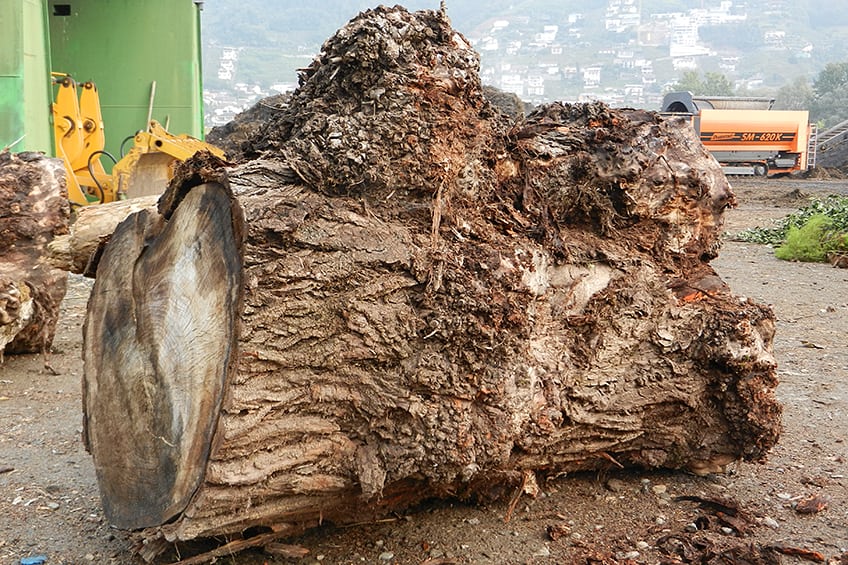
Why, you ask? Well, when you cut a burl from a live tree it can cause irreparable damage to the entire plant, often causing things like rot and infection that can result in the tree slowly withering away. It should go without saying then that you should never attempt to remove burl from a live tree, or you could risk the integrity of the entire tree.
Is there a way for you to get burled wood that isn’t from a wood supplier then? Yes! You can get burl from downed trees, or trees that have been allocated for felling. This might take a bit longer, but it is the ethical and sustainable way to source your burled wood. You should also do your best to ensure that your wood supplier has ethically sourced burl whenever possible.
How Do You Identify High-Quality Burl Wood?
How do you identify high-quality burl wood? Well, considering that each piece of burl wood is completely unique in its grain pattern and color, it’s virtually impossible to determine a standard to which all burl wood can be measured. Although, you could use the same standards that we use to determine the quality of conventional wood pieces to determine the quality of burl that you have.
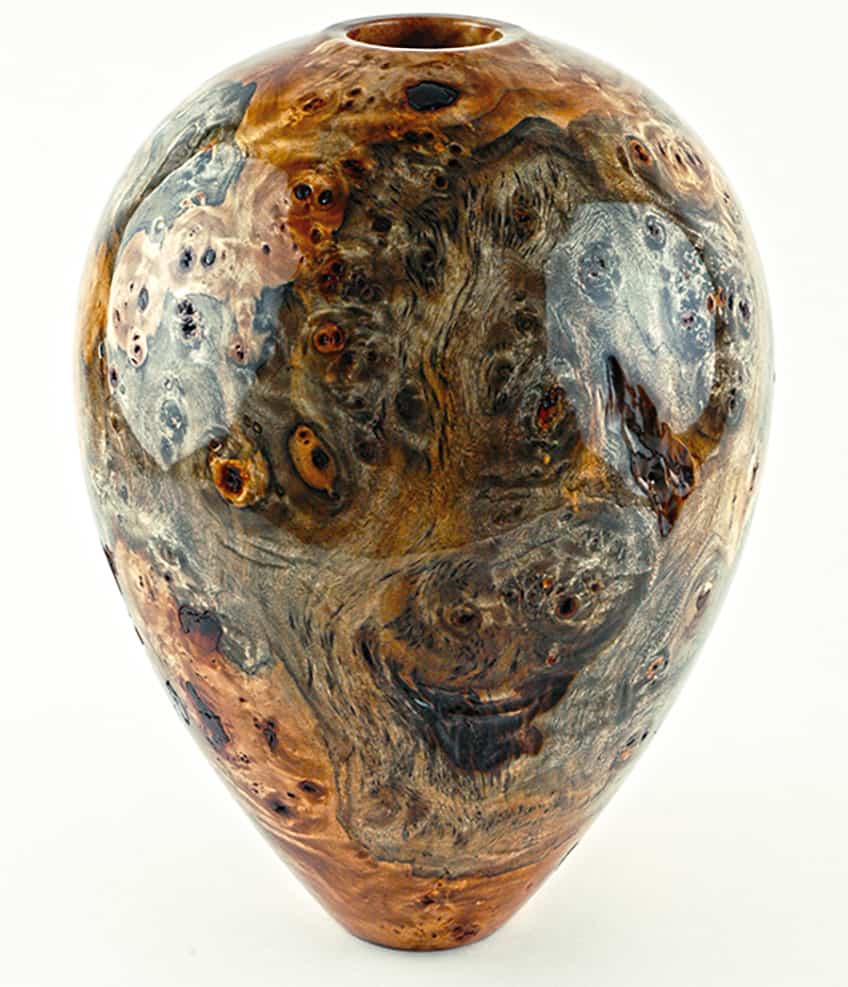
Since essentially all burl wood is cool to look at, you could use things like grain density, integrity, water content, the presence of knots, or performing a scratch test on processed burl to determine its quality. This should give you a good idea of whether or not your burl wood board is going to fall apart once you run it through a table saw.
Now that you know what burl wood is, what species of trees produce burl wood, the characteristics of different burl wood species, and some cool things that you can make with burl wood, it’s time for you to get out there and put your new-found knowledge to the test. Remember not to cut burl from live trees and to ensure that any burl you get is ethically sourced.
Frequently Asked Questions
What Is a Burl?
What is a burl? A burl is a sapling (or group of saplings) attached to a tree that has failed to sprout into another tree. As a result, these saplings will develop into what resembles wooden lumps on the trunk and root system of a tree. These burls contain unique and visually appealing grain patterns.
Is Burl Wood Valuable?
Wood burl is one of the most expensive wood types out there. While there might be particular species of tree that are expensive when it comes to conventional wood, burl is highly-priced nearly regardless of which tree species it is cut from.
Is Burl Wood Good for Furniture?
This is a good question considering how expensive furniture made from wood burl can be. In short, yes. Wood burl is excellent for furniture creation because of its resistance to spitting and how easy it is to work with, not to mention that its intricate grain patterns make each piece of furniture a one-of-a-kind workpiece.

I have been into woodworking since 2005 and woodturning since 2011. Because of my love for wood and woodworking, I started woodhappen.com to teach other enthusiasts about how to finish and seal wood, the best woodworking tools, the different types of wood, and everything else related to woodworking! Read more about me here.

